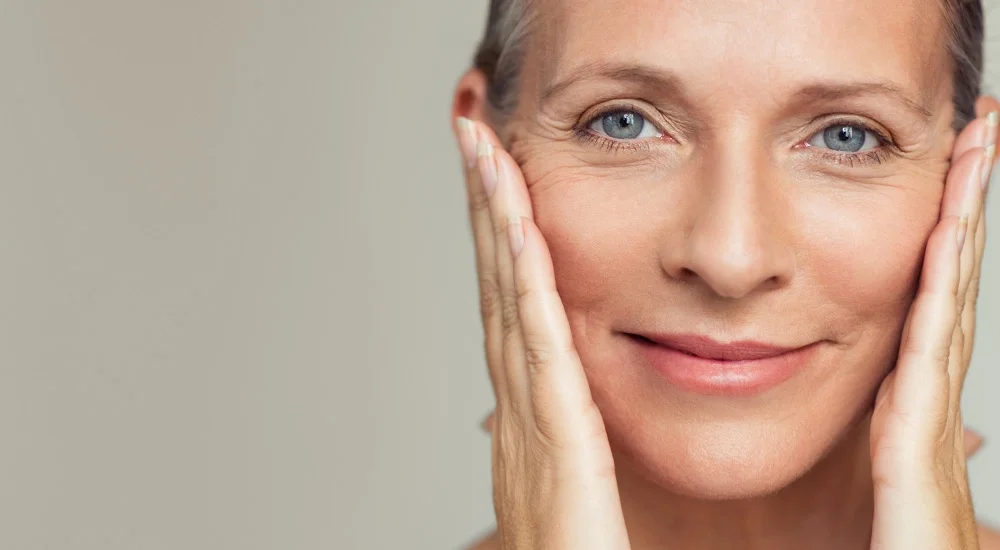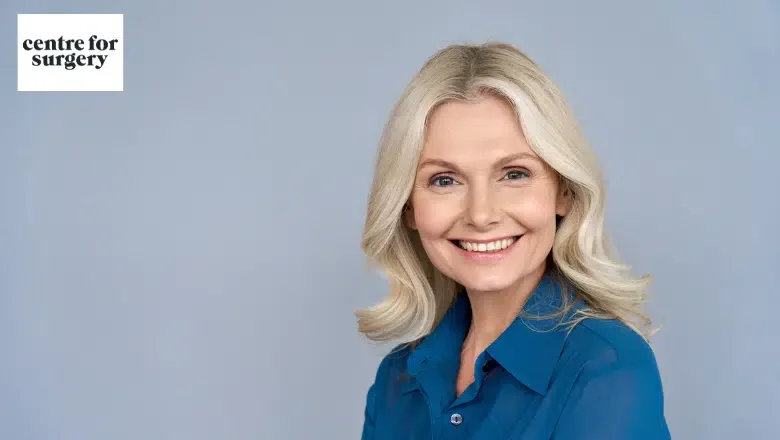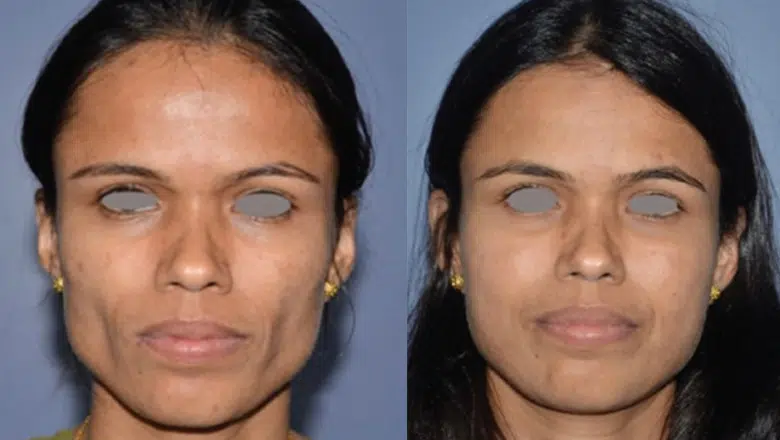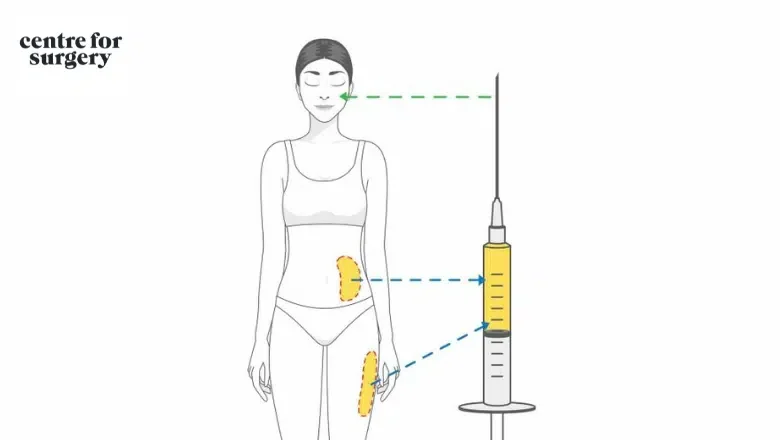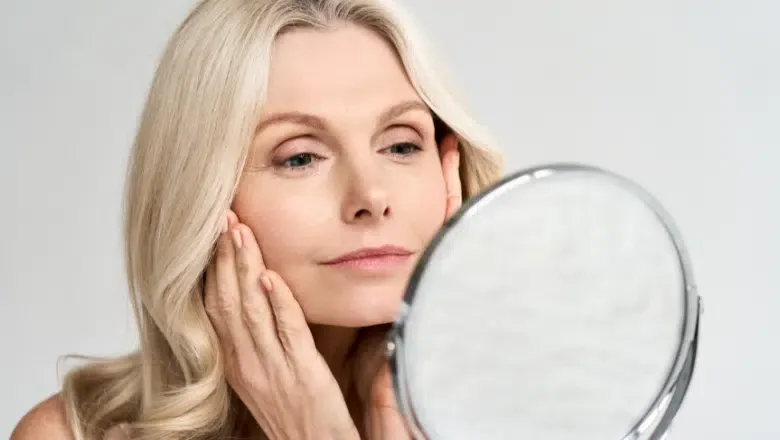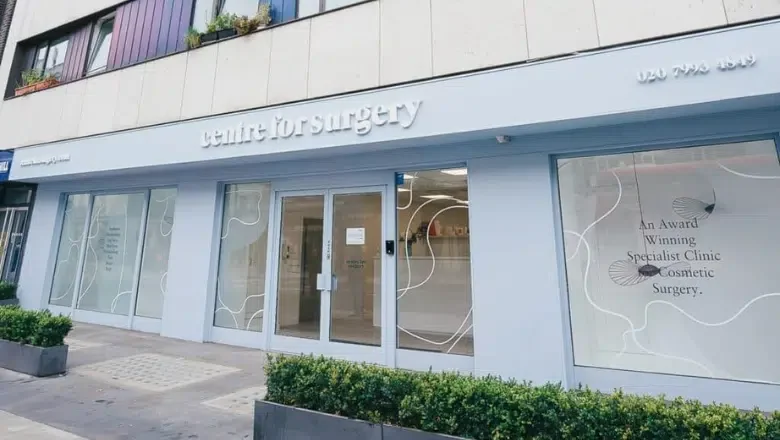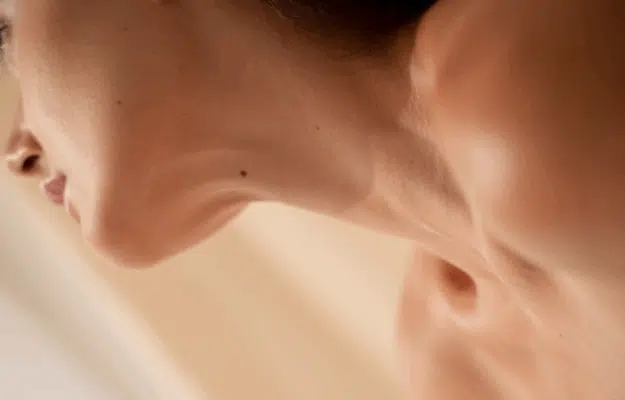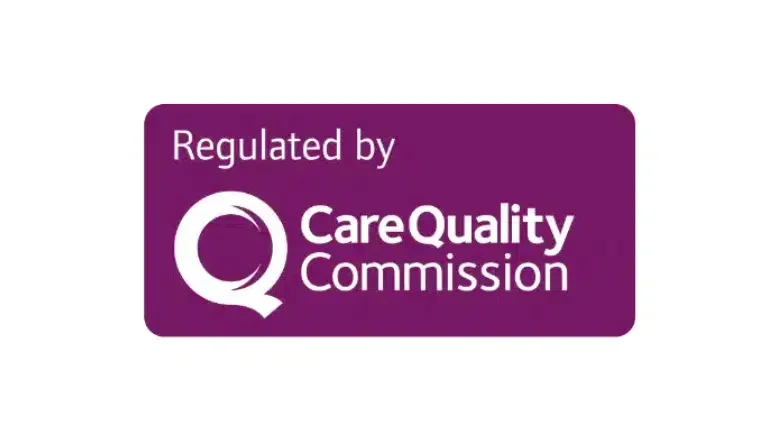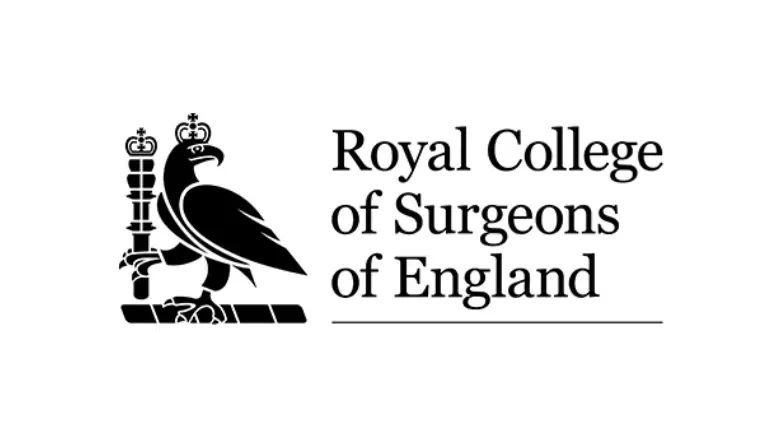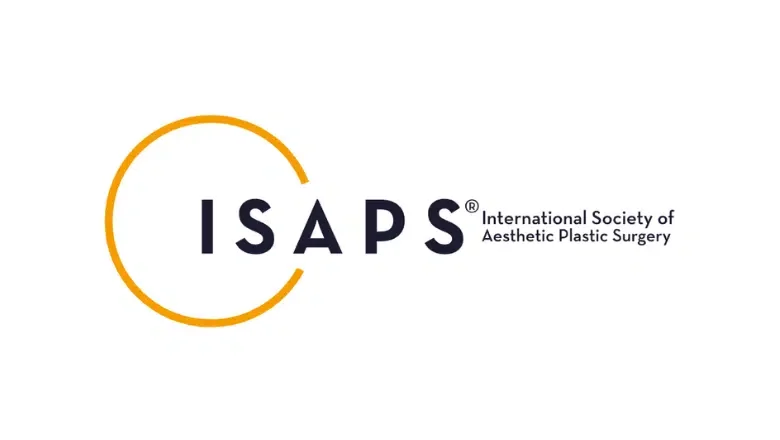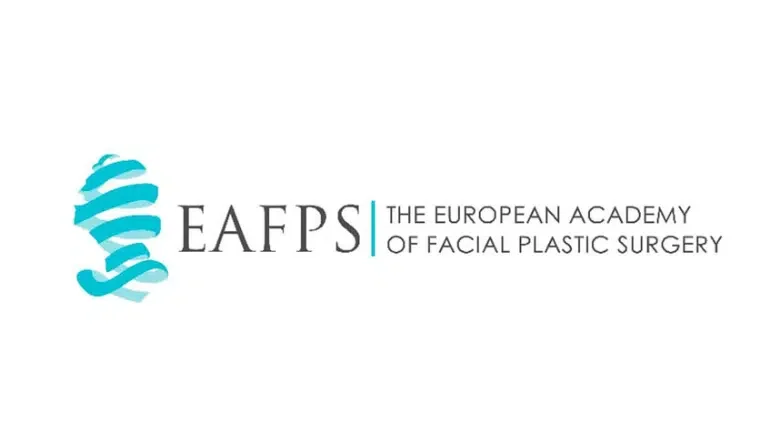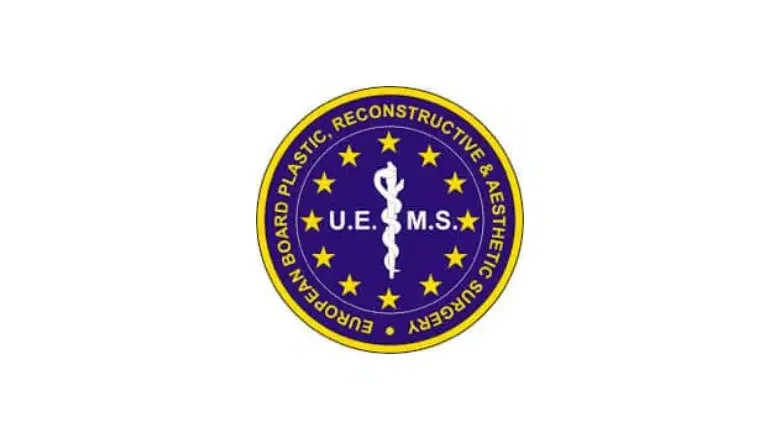Fat Transfer to Face in London
Facial Fat Injections can correct loss of facial volume
Facial fat transfer, also known as autologous fat grafting, is a procedure that reshapes the face and adds fullness to the cheeks using the patient’s own fat. This method serves as a more natural option compared to synthetic dermal fillers and wrinkle-reducing injections.
As the ageing progresses, the fat deposits that provide facial volume and liveliness diminish. This results in a deflated, gaunt, and delicate facial appearance. Replacing the lost volume is essential to regain a youthful look.
Fat injections for facial revitalisation are an exceptional means of achieving a natural-looking restoration. Fat is harvested through liposuction from areas of the body with excess fat (such as love handles) and then processed to create micro-fat suitable for facial grafting. This enhances facial volume and sculpts and firms other body regions.
Centre for Surgery is a specialist plastic surgery clinic offering autologous fat grafting for facial revitalisation to patients throughout London and the UK. Our skilled surgeons utilise fat injections to smooth out wrinkles and replenish volume in various facial areas, including the nose, chin, cheekbones, cheeks, jawline, and around the eyes.
RELATED: Facial Skin Tightening Treatments: A Comprehensive Guide
Advantages of fat transfer to face compared with dermal fillers
- Facial fat transfer makes use of your own fat for injection. Dermal fillers use hyaluronic acid
- The fat injection technique does not carry the risk of an allergic reaction compared with soft tissue fillers
- The results achieved from fat injections last much longer compared to cosmetic injectables
| Face fat transfer | Fast facts |
|---|---|
| Anaesthetic type 💉 | LA or GA |
| Procedure time ⏳ | 1-2 hours |
| Length of stay 🛏 | Day case |
| Up and mobile 🚶🏻♂️ | Same day |
| Washing 🛁 | 3 days |
| Sexual activity ❤️ | 2 weeks |
| Back to work 📅 | Desk work next day |
| Postoperative garment 👕 | Not required |
| Sleeping 😴 | On back 1 week |
| Exercise 🏃🏽♀️ | 4 weeks |
| Full recovery 🕺🏻 | 6 weeks |
| Final results 😃 | 6-12 weeks |
What is Facial Fat Grafting?
Facial Fat Transfer is a popular facial rejuvenation technique that reshapes the face and reestablishes liveliness using your own body fat. The surgeon extracts your body fat through liposuction and subsequently injects it to enhance the cheeks and fill various facial areas. The fat injected into the face is permanent, leading to enduring results.
Alternative terms for facial fat grafting include:
- Autologous fat transfer
- Fat injections for facial rejuvenation
- Lipostructure
- Fat grafting to the face
- Facial lipofilling
- Facial volume restoration with fat
- Facial adipose transplantation
- Self-donated fat grafting for facial enhancement
These terms all refer to harvesting fat from one part of the body, purifying it, and then injecting it into the face to restore volume, enhance contours, and improve overall facial appearance.
Facial fat injections present a more organic approach to augmenting facial volume in the cheeks and defining the chin and jawline. As a result, they are an appealing choice for those who prefer to avoid synthetic fillers or wrinkle-reducing injections.
Though the procedure appears straightforward, it necessitates significant surgical expertise to achieve the best possible outcomes. Inadequate execution may raise the likelihood of graft shrinkage. Our surgeons employ state-of-the-art purification methods to ensure that most fat cells injected into the face are preserved.
Facial Fat Transfer Before & After
Benefits of Facial Fat Grafting
Facial fat grafting is a popular cosmetic procedure that offers a range of benefits for individuals seeking facial rejuvenation and enhancement. It involves the transfer of fat from one part of the body (donor site) to the face to restore volume, improve contours, and reduce the appearance of wrinkles. Below are several key benefits of facial fat grafting, which contribute to its growing popularity among patients and surgeons alike:
Natural and biocompatible material
One of the primary advantages of facial fat grafting is using your own body fat, which eliminates the risk of an allergic reaction or rejection. The autologous fat is biocompatible and naturally integrates with your existing facial tissues, resulting in a more organic and harmonious appearance.
Long-lasting results
Unlike temporary dermal fillers, facial fat grafting can provide more enduring results. Once the transferred fat cells establish a blood supply and integrate into the recipient site, the outcome can be long-lasting, with many patients enjoying the benefits for years.
Minimally invasive
Facial fat grafting is a minimally invasive procedure compared to traditional facelift surgery. It involves small incisions for liposuction and fat injection, resulting in reduced scarring and a shorter recovery period.
Dual benefits
The procedure enhances facial appearance and contours the donor site where the fat is harvested. This can lead to improved body proportions, as areas such as the abdomen, thighs, or love handles may appear more toned and sculpted.
Versatile application
Facial fat grafting can address various concerns and can be used in different areas of the face, including the cheeks, temples, under-eye hollows, nasolabial folds, marionette lines, chin, and jawline. It can restore volume, improve facial symmetry, and create a more youthful, rejuvenated appearance.
Reduced risk of complications
Since the procedure uses your own body fat, there is a decreased likelihood of complications, such as allergic reactions, infections, or the formation of lumps and granulomas, which can sometimes occur with synthetic dermal fillers.
Natural-looking results
Facial fat grafting can achieve subtle and natural-looking improvements, avoiding an overdone or artificial appearance that may result from the excessive use of synthetic fillers or invasive surgical procedures.
RELATED: Facial Fat Transfer vs Fillers
Boost in self-confidence
An enhanced facial appearance can significantly improve one’s self-esteem and confidence. Many patients report feeling more comfortable and satisfied with their appearance following facial fat grafting.
Customisable treatment
The procedure can be tailored to address each patient’s unique concerns and aesthetic goals, allowing for personalised results that enhance the individual’s natural features.
Complementary to other procedures
Facial fat grafting can be performed alongside other cosmetic procedures, such as facelifts, neck lifts, or eyelid surgery, to optimise overall facial rejuvenation and achieve a balanced, harmonious outcome.
RELATED: Benefits of Fat Injections to Face
Am I suitable for fat transfer to face?
Several factors need to be considered before you can determine if you are a suitable candidate for facial fat grafting. While only a consultation with a qualified and experienced facial plastic surgeon can provide a definitive answer, the following general criteria may help you understand whether you might be a good candidate for the procedure:
Age and skin condition
Facial fat grafting is typically most effective for individuals who are experiencing age-related facial volume loss, wrinkles, and sagging skin. However, younger patients with genetic predispositions or specific concerns may also benefit from the procedure.
Overall health
Ideal candidates should be in good general health, without any serious medical conditions that could complicate the surgery or recovery process. Conditions such as diabetes, heart disease, or autoimmune disorders may affect your candidacy for facial fat grafting.
Non-smoker
Smoking can negatively impact the healing process, blood circulation, and the survival of transferred fat cells. If you are a smoker, it is highly recommended that you quit smoking well before the procedure and during the recovery period.
Realistic expectations
You should clearly understand the potential outcomes of facial fat grafting and maintain realistic expectations. The procedure can improve facial volume, and contours, and reduce wrinkles, but it will not completely transform your appearance or halt the ageing process.
Sufficient donor fat
To be a suitable candidate for facial fat grafting, you must have enough donor fat available in other areas of your body, such as the abdomen, thighs, or love handles. Individuals who are extremely lean or lack adequate fat deposits may not be ideal candidates for this procedure.
Willingness to follow postoperative instructions
Proper care and adherence to your surgeon’s post-operative instructions are crucial for successful fat grafting and optimal results. This may include taking prescribed medications, avoiding certain activities, and attending follow-up appointments.
Fat transfer to face procedure
The facial fat transfer procedure is a multi-step process that involves harvesting fat from one part of the body, purifying it, and then injecting it into the face to restore volume and improve contours. Here is a detailed description of the procedure:
Preoperative preparation
In the days or weeks leading up to your surgery, your surgeon will provide you with pre-operative instructions. This may include stopping certain medications, avoiding smoking, and arranging for transportation and aftercare.
Anaesthesia
The facial fat transfer procedure is typically performed under local anaesthesia with sedation or general anaesthesia, depending on the extent of the surgery and the patient’s preferences. Your surgeon will discuss the most appropriate anaesthesia option for you during the consultation.
Fat harvesting
The first step of the procedure involves liposuction to harvest fat from a donor site on your body, such as the abdomen, thighs, or love handles. The surgeon will make a small incision in the donor area and insert a thin, hollow tube called a cannula to loosen and suction out the fat.
Fat purification
Once the fat has been harvested, it undergoes a purification process to separate the viable fat cells from any impurities, such as blood, oil, and damaged cells. This step typically involves centrifugation, filtration, or washing, depending on the surgeon’s preferred method.
Fat injection
After the fat has been purified, the surgeon will use a syringe and a small, blunt-tipped cannula to meticulously inject the fat into the target areas of your face. The fat is usually injected in small, even layers to create a smooth, natural-looking result. Multiple injection points may be used to ensure proper distribution and integration of the fat.
Closing incisions
Once the desired volume and contour have been achieved, the surgeon will close any incisions with sutures or surgical tape. In most cases, the incisions are tiny and result in minimal scarring.
Postoperative care
After the procedure, you will be monitored in the recovery area until ready to go home. Your surgeon will provide you with post-operative care instructions, which may include wearing a compression garment on the donor site, taking prescribed medications, and attending follow-up appointments.
Recovery after fat transfer to face
Following your surgery, you can expect some swelling and bruising, which will fade away within a few days. Pain medication can be taken to ease any discomfort.
You may be given antibiotics to take during the recovery period. This will help lower your risk of infections.
You should see results once the swelling has gone down. However, it may appear that too much fat has been transferred, and at first, the results may appear swollen. This is because the body will naturally absorb a certain percentage of the fat. It may take a few months for the final results to be noticeable.
You can return to work after a day or two after your surgery, but strenuous activities must be avoided for at least two weeks.
The result achieved from the fat injection procedure can last a long time as long as a good aftercare routine is followed. If the volume of the face has not increased enough or if too much fat was absorbed by the body, you may wish to return for a smaller top-up procedure.
Risks and potential complications of fat injections
There are several potential risks associated with fat injections. At the consultation, your surgeon will always take time to discuss the risks and complications associated with fat injections fully. All risks need to be outlined regardless of how rare they are. By choosing Centre for Surgery for your facial fat injection procedure, you can be confident in having highly experienced and expert surgeons to perform your procedure.
Potential complications associated with fat transfer to the face
- Anaesthetic risks
- Lipofilling donor site complications
- Surgical scarring
A common issue after fat injections to the face is either underfilling or overfilling. Underfilling is less of an issue than overfilling. Repeated fat injections can be safely performed if excess fat absorption occurs. However, if too much fat has been injected, then to remove the extra fat, the surgeon has to perform micro liposuction on the face, which is difficult as it lacks accuracy and precision. To prevent the risk of overfilling, the surgeon will inject all the marked areas first and then perform fat injections to the desired aesthetic goal during the procedure. The surgeon will take great care to inject the correct areas as fat injected outside of the marked regions may look unsightly and give the look of a chubby round face. Surgeons typically inject 10-20% extra to account for a 30-50% loss of injected fat.
Results after Facial Fat Grafting
The results of facial fat transfer take several months to fully manifest, as the grafted fat undergoes a settling process. Although the extracted fat is purified to optimise its viability, it still contains some fluid. As the body absorbs these fluids post-injection, the volume of the graft will reduce.
RELATED: Is facial fat transfer permanent?
Research indicates that between 30% to 40% of the graft volume may be lost within the first year. As a result, many patients often require a second or third fat transfer treatment to achieve their desired facial volume and fullness.
Once the desired level of facial enhancement is attained after two or three fat grafting sessions, the results can last for several years. However, individual experiences may vary, and the longevity of the results can be influenced by factors such as age, lifestyle, and genetics. To maintain optimal outcomes, it is crucial to follow your surgeon’s postoperative instructions and adopt a healthy lifestyle.
What procedures are commonly combined with facial fat transfer?
Facial fat transfer is often combined with other surgical or non-surgical procedures to enhance overall facial rejuvenation and achieve a more balanced, harmonious outcome. Some commonly combined procedures include:
Facelift (Rhytidectomy)
A facelift is often combined with facial fat transfer to address sagging skin, tighten underlying facial muscles, and restore volume for a more youthful and refreshed appearance.
Neck lift (Platysmaplasty)
A neck lift can be performed alongside facial fat transfer to address sagging skin, muscle laxity, and excess fat in the neck area. This combination provides a more comprehensive rejuvenation of the lower face and neck.
Blepharoplasty (Eyelid Surgery)
Eyelid surgery can be combined with facial fat transfer to improve the appearance of the upper and/or lower eyelids. This can help to address sagging or drooping eyelids, under-eye bags, and hollows in the tear trough area.
Brow lift (Forehead lift)
A brow lift can elevate the eyebrows and smooth forehead wrinkles. When combined with facial fat transfer, it can enhance the overall rejuvenation of the upper face and create a more alert, youthful appearance.
Rhinoplasty (Nose surgery)
Rhinoplasty can be performed in conjunction with facial fat transfer to improve the size, shape, and overall appearance of the nose while simultaneously enhancing facial harmony and balance.
Chin augmentation
Facial fat transfer can be combined with chin augmentation (using implants or fat grafting) to improve the proportions and contours of the chin, creating a more balanced facial profile.
Laser skin resurfacing or chemical peels
These non-surgical skin treatments can be combined with facial fat transfer to address skin texture, fine lines, wrinkles, and pigmentation issues, resulting in a more even and youthful skin tone.
Dermal fillers or Anti-wrinkle injections
In some cases, dermal fillers or wrinkle relaxing injections may be used with facial fat transfer to address specific areas of concern, such as fine lines, wrinkles, or volume loss not fully addressed by fat grafting alone.
Why choose Centre for Surgery for facial fat transfer?
Experienced and Skilled Surgeons
Our team comprises highly qualified and experienced surgeons specialising in various cosmetic and medical procedures. Their expertise ensures that you receive personalised care and the best possible results.
State-of-the-Art Facilities
Centre for Surgery boasts modern, state-of-the-art facilities designed to provide a comfortable and safe environment for your procedure. Our advanced equipment and technologies ensure the highest standards of care.
Personalised Care and Attention
We pride ourselves on offering personalised care and attention to each patient. Our dedicated staff and surgeons work closely with you to understand your goals and develop a tailored treatment plan that meets your individual needs.
Comprehensive Consultation Process
Our comprehensive consultation process ensures that you have a thorough understanding of the procedure, risks, and expected outcomes. We prioritise patient education and open communication, helping you make informed decisions about your treatment.
Focus on Patient Safety and Satisfaction
At Centre for Surgery, patient safety and satisfaction are our top priorities. We follow strict safety protocols and adhere to the highest medical standards, ensuring a safe and positive experience for our patients.
Aftercare and Support
We provide exceptional aftercare and support throughout your recovery process. Our team is always available to answer any questions or address concerns, making sure you feel comfortable and well-informed during your healing journey.
Transparent Pricing and Financing Options
We offer transparent pricing and a range of financing options to help make your desired procedure more affordable. Our team can guide you through the available payment plans, ensuring you can confidently invest in your well-being.
Choosing Centre for Surgery means you are selecting a top plastic surgery clinic committed to providing the highest quality care, personalised attention, and exceptional results. Our dedicated team is here to support you every step of the way, ensuring a safe and satisfying experience from consultation to recovery.
What is included in my treatment package?
- As many preoperative consultations with your surgeon as you like to make sure the procedure is right for you
- Treatment at a specialist day surgery facility recently rated ‘Good’ by the CQC
- Enhanced same-day discharge with the added benefits of recovering in your own home
- 24/7 clinical support from your surgeon for the first 48 hours and our expert postoperative support team
- Your very own dedicated patient coordinator
- In-depth preoperative medical assessment to make sure you are fully fit for the rhinoplasty procedure
- The CQC describes our exceptionalally high standards of postoperative care as ‘outstanding’, and our expert postoperative support team regularly checks them via telephone and face-to-face.
RealSelf Top Doctors
RealSelf’s top doctor status is awarded to less than 10% of the RealSelf doctor community. This status is earned by achieving consistently high patient satisfaction (from RealSelf reviews), getting excellent feedback on expert answers to patient questions, and investing significant time in Q&A and other doctor activities. RealSelf’s top doctors are rated among the best surgeons in the United Kingdom.
Essential Steps to Take Before Your Consultation
Conduct Thorough Research
- Read a procedure guide to gain further insight into your surgery
- Visit our website to learn more about the specific procedure you’re interested in
Is a Medical Referral Necessary for a Consultation at Our Clinic?
- A medical referral is helpful but not required for purely cosmetic consultations.
- If you seek a consultation for medical reasons and have private insurance, please obtain a referral from your GP or specialist.
Maximising the Benefits of Your Consultation
- Arrive a little early for your in-person consultation
- Feel free to bring a friend or family member to assist you in processing information and discussing your options
- Be prepared to undress for a physical examination; wear simple clothing
- Take detailed notes during the consultation and carefully review all provided documents
Seeking More Information Before Scheduling a Consultation?
- Learn more about pricing, medical payment plans, and financing your surgery.
- Request additional information about the procedure – call or contact us
Booking Your Consultation
- Secure your initial consultation by prepaying the £100 cosmetic consultation fee when scheduling your appointment.
ARRANGE A PHONE CALL FOR MORE INFORMATION
- To arrange a surgeon consultation at our Baker Street clinic, contact us or call on 0207 993 4849
For more information, email us: contact@centreforsurgery.com
FAQs
-
What is fat transfer to face?Fat transfer to face, also known as lipofilling, facial fat grafting and face fat transfer, is performed when more volume is preferred due to a loss of facial volume with the ageing process. With age, many people tend to gain fat in the body but lose it in the face. This, combined with the loss of facial volume in the form of muscle and bone, makes a face look older. During youth, the face is usually heart-shaped in appearance; however, as people age, the heart shape falls to form a rectangular appearance. The distribution of facial fat loss varies from person to person. The surgeon is able to remove fat cells from donor areas such as the abdomen, hips or inner thighs and carefully transfer the fat to targeted areas of the face where more volume is required. Fat grafting is also ideal for those patients who have developed postoperative contour deformities from previous liposuction. Targeted fat injections can also add volume to fill in fine lines, wrinkles and deeper folds. Fat injections can also be used for scar revision. It is not possible to achieve 100% graft survival with fat transfer, but with modern methods, the rate of fat survival can be as high as 80%. The viable fat will be permanent which results in a visible improvement in facial contour.
Fat transfer has been performed in various forms for over 100 years, but it is only in the last 20 to 30 years that the procedure has evolved to become highly effective and give consistently good results. The techniques for facial fat transfer have now become more standardised for fat removal, fat processing and fat re-injection. With the success of liposuction and fat transfer means, body contouring surgery has become the most popular cosmetic procedure today.
Fat transfer to the face is a more natural approach to facial rejuvenation and is also much longer lasting when compared with HA dermal filler injections. Dermal fillers must be repeated every 6-12 months to maintain the results, however. Fat transfer is a one-and-done procedure with no requirement for further repeat treatments. When considered over the long-term, facial fat transfer may be a more economical option for facial rejuvenation. Although fat injections can be performed on their own, it is more commonly combined with facial rejuvenation procedures such as blepharoplasty, facelift, brow lift or laser resurfacing. The procedure adds facial volume by acting as a scaffold for the skin, recreating a vibrant and youthful appearance.
Expected results after face fat transfer
Increased volume with a smoother appearance to areas injected with fat
Improved facial contour
Improvement in fine lines and wrinkles with the use of micro fat
Improvement in skin texture and quality with nano fat
By analysing the pattern of facial ageing in a 3-dimensional fashion, our skilled facial plastic surgeons can restore fat to areas of the face where volume has been lost. Fat injections can be performed around the entire face and temples, as well as to only specific areas. -
Do fat injections in the face work?Yes, fat injections can work to add volume and contour to the face. This procedure involves removing fat from one area of the body, typically the abdomen, thighs, or hips, and injecting it into the face to enhance facial features and restore a youthful appearance.
Facial fat grafting is a popular and effective procedure that can provide long-lasting results. The transferred fat can be used to address a variety of cosmetic concerns, such as wrinkles, fine lines, hollows under the eyes, and loss of volume in the cheeks, temples, and jawline.
One of the main advantages of facial fat grafting is that it uses the patient's own tissue, making it a safe and natural solution. Additionally, because the transferred fat contains stem cells, it can stimulate the production of collagen, which helps to improve the overall quality and texture of the skin. -
Is facial fat grafting safe?Facial fat grafting, also known as fat transfer, is generally considered safe when performed by a qualified and experienced plastic surgeon. Like any surgical procedure, facial fat grafting does carry some risks and potential complications, including infection, bleeding, asymmetry, and over-correction.
To minimise these risks, it's important to choose a skilled plastic surgeon with extensive experience in facial fat grafting. The surgeon should conduct a thorough assessment to determine if you are a good candidate for the procedure and discuss the potential risks and benefits.
During the procedure, the surgeon will use sterile techniques and carefully inject small amounts of fat into the targeted areas to ensure a smooth and natural-looking result. -
Can fat be injected under the eyes?Yes, fat can be injected under the eyes as a part of a facial fat grafting or fat transfer procedure to address hollows or dark circles under the eyes. This technique is often referred to as tear trough filler or under eye filler.
Under eye filler using fat transfer involves removing a small amount of fat from one area of the body, purifying it, and then carefully injecting it into the under eye area using a small needle or cannula. The transferred fat is used to fill in the hollows and provide natural-looking volume and contour. -
Am I a good candidate for facial injections?Fat transfer to face is ideal for patients who feel they have a loss of facial volume due to the ageing process. Fat transfer to face can help soften fine lines and wrinkles and also add volume to the face for a more youthful and refreshed appearance. The procedure also addresses the fat loss on the face that defines the contour of the cheeks and jawline. Our surgeons use facial fat grafting techniques to fill up the hollow areas to restore the natural contours of the face that may have been lost during the ageing process.
It is important to have realistic expectations of what the procedure can achieve and have a thorough understanding of the procedure. Some of the fat transferred may become reabsorbed, and in certain cases, you may need to undertake a touch-up or repeat session to achieve the desired results.
Those who will not be suitable for fat injections include those who do not have enough fat in donor areas which can be transferred. Those who have an unstable weight may also be considered unsuitable. Active smokers are also not advised to undertake facial fat transfer due to adverse effects on transferred fat from the components of tobacco smoke. -
Is facial fat grafting permanent?Facial fat grafting, also known as fat transfer, involves removing fat from one area of the body and injecting it into the face to add volume and contour. The longevity of the results from facial fat grafting can vary from person to person and depends on several factors, including the technique used, the amount of fat transferred, and the individual's unique anatomy and lifestyle.
In general, facial fat grafting is considered a long-lasting solution, but it is not necessarily permanent. The body will naturally reabsorb some of the transferred fat over time, which can lead to a gradual decrease in volume. However, with proper technique and post-operative care, the results of facial fat grafting can last for several years. -
What areas of the face can facial fat grafting target?Facial fat grafting can target a variety of areas on the face to add volume and contour, including:
Cheeks: Facial fat grafting can be used to add fullness and definition to the cheeks, which can help to restore a youthful appearance.
Temples: As people age, they may lose volume in the temples, which can create a hollowed-out appearance. Facial fat grafting can help to fill in this area, creating a more youthful look.
Jawline: Facial fat grafting can be used to add volume to the jawline, creating a more defined and youthful appearance.
Lips: Facial fat grafting can be used to enhance the lips, adding volume and contour to create a more full and youthful appearance.
Under-eye area: Facial fat grafting can be used to fill in hollows or dark circles under the eyes, creating a more refreshed and youthful appearance.
Nasolabial folds: Facial fat grafting can be used to fill in deep folds that run from the nose to the corners of the mouth, creating a smoother and more youthful appearance.
Forehead: Facial fat grafting can be used to add volume to the forehead, which can help to smooth out wrinkles and create a more youthful appearance. -
Facial fat transfer vs dermal fillers - which is better?The decision to choose between facial fat transfer and dermal fillers will depend on the individual's unique needs and goals, as well as other factors such as budget and the availability of time.
Facial fat transfer involves removing fat from one area of the body, such as the abdomen, thighs, or hips, and injecting it into the face to add volume and contour. This procedure provides natural-looking and long-lasting results, as the transferred fat can integrate with the surrounding tissues and become a permanent part of the face. Facial fat transfer can also help to stimulate collagen production, improving the overall quality and texture of the skin.
Dermal fillers, on the other hand, are temporary injectable products that can be used to add volume and contour to the face. These products are made of hyaluronic acid, which is a naturally occurring substance in the body. Dermal fillers are a non-surgical and minimally invasive option that can provide immediate results with little downtime. They can be customised to achieve specific goals, such as filling in wrinkles, enhancing the lips, or improving the overall shape and contour of the face. -
How much fat is needed for facial fat transfer?The amount of fat needed for facial fat transfer, also known as fat grafting or fat injections, can vary depending on several factors, including the individual's facial anatomy, the extent of the procedure, and the desired outcome.
In general, most facial fat grafting procedures require anywhere from 10 to 50 ml of fat, which can be harvested from one or more areas of the body, such as the abdomen, thighs, or hips. However, the specific amount of fat needed will depend on the individual's unique needs and goals. -
How long does bruising and swelling last after fat transfer to face?The duration of bruising and swelling after facial fat grafting can vary from person to person, but in general, patients can expect to experience some level of bruising and swelling for the first week or two following the procedure. However, the severity and length of bruising and swelling can depend on a variety of factors, including the extent of the procedure, the patient's individual healing response, and the surgeon's technique.
To minimise bruising and swelling, patients are advised to follow their surgeon's post-operative instructions carefully, which may include keeping the head elevated, using cold compresses, and avoiding strenuous activities for several days. Additionally, taking Arnica supplements or applying Arnica cream can also help reduce bruising.
Most patients can return to work and resume normal activities within one to two weeks after the procedure, although some residual swelling and bruising may persist for several weeks. It's important to note that the full results of facial fat grafting may not be apparent until several months after the procedure, as the transferred fat settles and integrates with the surrounding tissues. -
Are fat injections painful?Facial fat injections can cause some discomfort and pain, but this can be easily managed with appropriate pain management techniques.
During the procedure, the surgeon will use local anaesthesia to numb the area where the fat will be harvested and injected. This will help to minimize discomfort during the procedure. Additionally, some surgeons may also offer sedation or general anaesthesia for added comfort.
After the procedure, patients may experience some discomfort, swelling, and bruising in the treated areas. However, this can be managed with over-the-counter pain medications, such as paracetamol or ibuprofen, or prescription pain medications necessary. -
Will I be left with scars after facial fat grafting?Facial fat transfer is a minimally invasive procedure that typically involves small incisions or injection sites. In most cases, the incisions or injection sites are very small and will heal on their own without any noticeable scarring.
The surgeon will make the incisions or injection sites in inconspicuous locations whenever possible, such as behind the ear or within the hairline, to minimise the risk of visible scarring. In some cases, the surgeon may use a very small needle to inject the fat directly into the treatment area, without the need for any incisions at all. -
How do you keep fat after fat transfer?After facial fat transfer, it's important to follow proper postoperative care to ensure the best possible results and to minimise the risk of complications.
To keep the transferred fat after a facial fat transfer, avoid putting pressure or excessive force on the treated areas for at least several days after the procedure. This includes avoiding any strenuous activities or exercise, as well as avoiding sleeping on the face.
In addition, patients should follow their surgeon's instructions for post-operative care, which may include using cold compresses, keeping the head elevated, and avoiding smoking or alcohol consumption. Patients may also be advised to avoid certain medications that can thin the blood, which can increase the risk of bleeding or bruising. -
Is facial fat transfer reversible?Facial fat transfer is not a reversible procedure in the sense that it cannot be easily undone once the fat has been transferred and integrated with the surrounding tissues.
During the procedure, fat is harvested from one area of the body, such as the abdomen, thighs, or hips, and then carefully injected into the face to add volume and contour. Once the fat has been transferred, it will gradually integrate with the surrounding tissues and become a permanent part of the face.
In some cases, a surgeon may be able to partially or fully reverse the effects of facial fat transfer. For example, if a patient is unhappy with the results, the surgeon may be able to remove some of the transferred fat using liposuction or other techniques. -
Are fat injections, lipofilling and fat grafting the same thing?Yes, fat injections, lipofilling and fat grafting are the same thing.
They all refer to the process of removing fat from a donor area and injecting it back into the area needed to be treated.
What To Expect
The consultation
We always recommend a face to face consultation with one our expert plastic surgeons as a first step in your journey towards facial rejuvenation with fat transfer. When you meet with one of our surgeons, your surgeon will take time to listen carefully to what you hope to achieve and give you an expert opinion on what can and cannot be achieved after performing a thorough physical examination. Your surgeon may use computerised digital imaging to map the structure of the face in detail to give you an idea of what your eyelids could look like after your fat transfer procedure. Your surgeon will also take a number of measurements as part of a detailed facial analysis. Finally high resolution photographs are taken in a number of views. Your surgeon will assess how much fat to harvest for the fat transfer procedure. The surgeon will plan the harvest of fat from a suitable donor site in conjunction with you. Common areas for harvest include the abdomen, flanks, hips and inner thighs. However any area may be suitable as long as there is enough fat for the fat transfer part of the procedure. A general rule is that double the volume of fat required for transfer is required. This is because during fat processing, the volume of fat will be decrease as a higher purity of fat is obtained. Your surgeon will also discuss with you the potential risks and complications of face fat transfer surgery and what to expect in the postoperative phase during your healing and recovery. It is important to know what medicines you taking as some medicines can interfere with blood clotting and may need to be stopped. Any history of medical conditions or previous surgery will also be recorded and all the compiled information is used to make a decision on your medical fitness for the fat grafting procedure. After a recommended two week "cool off" period and provided you are appropriate for the procedure, you can then make an informed decision on whether you would like to proceed with the fat transfer procedure. If you are unsure on any aspect of the facial fat transfer surgery procedure and what it entails then we would invite you to return for as many follow-up consultations with your surgeon as you like to make sure that facial fat grafting surgery is right for you. The consultation lasts about 45 minutes on average. It may take longer if your procedure is going to be more complex. We would actively recommend coming in for a follow-up consultation to ensure all your questions are answered.
Preparing for facial fat grafting
It's important to follow these behavioural changes recommended or required before your facial fat grafting procedure to help ensure the best possible outcome and minimise the risk of complications.
Stopping smoking at least six weeks before your procedure is recommended, as smoking can affect the healing process and increase the risk of complications. This is particularly important for facial fat grafting, as smoking can reduce the viability of the transferred fat, leading to a reduced effectiveness of the procedure.
Ceasing the use of aspirin or any medication that contains aspirin is required in the week before your procedure, as these medications can increase the risk of bleeding during the procedure. It's important to discuss any medications or supplements you are taking with your surgeon to ensure that they are safe to continue taking before your procedure.
Not consuming any food or drink, other than small sips of clear fluid, for 6 hours prior to your surgery is required to ensure that your stomach is empty, reducing the risk of nausea and vomiting during the procedure.
Overall, following these behavioural changes recommended before your facial fat grafting procedure can help to ensure a safe and successful outcome, and it's important to follow your surgeon's instructions carefully to minimize the risk of complications.
On the day of your procedure
On the day of your facial fat transfer procedure, it's important to arrive at the clinic an hour before the start time of the surgery. Upon arrival, a nurse will record your blood pressure and other relevant vitals before you meet with your anesthetist and your surgeon for the final mark-ups. This ensures that the treatment is tailored to your unique needs and goals.
Facial fat transfer is a minimally invasive procedure that is typically carried out under local anesthesia or sedation, depending on the extent of the procedure and the patient's individual needs. The procedure usually takes around 30 minutes to an hour to complete, although it may take longer if the fat transfer is combined with other treatments.
The first step of the procedure involves extracting fat from elsewhere on the body, such as the thighs or tummy. The surgeon will then process the fat using filtration and centrifuge spinning, which separates the fat from blood and other oily fluids. Once the fat has been purified and prepared, it will be injected into the area of the face that is being treated, such as the cheeks, chin, or brow.
During the procedure, the surgeon will carefully inject small amounts of fat into the targeted areas to ensure a smooth and natural-looking result. Stitches are not usually required, as the injection sites are typically very small and will heal on their own.
After the procedure, patients will be given postoperative instructions to follow to ensure proper healing and minimise the risk of complications. It's important to follow these instructions carefully to achieve the best possible outcome.
After your procedure
During the facial fat transfer procedure, you should not feel any pain as it is typically performed under local anaesthesia or sedation. However, you may experience some discomfort and pain for a few days following the procedure. If you do experience pain, you will be given painkillers to manage it.
After the procedure, you will be taken to an ambulatory recovery room to recover for one to two hours, depending on the extent of the procedure. Once the nursing team is satisfied that you are safe to leave, you will be allowed to go home with a friend or family member.
Once you are home, you will have access to a dedicated on-call nursing team 24 hours a day, 7 days a week, to answer any questions or concerns you may have during the immediate postoperative phase.
It's important to follow the postoperative instructions provided by the surgeon to ensure proper healing and minimize the risk of complications. This may include coming in to see the nursing team one week after surgery to review your incision sites and meeting with an aesthetician to discuss ongoing treatment to support the healing and scarring process.
Finally, you will be asked to come in for a final check-up with your surgeon after 6 to 8 weeks to ensure that the healing process is progressing as expected and to address any concerns or issues that may arise.


